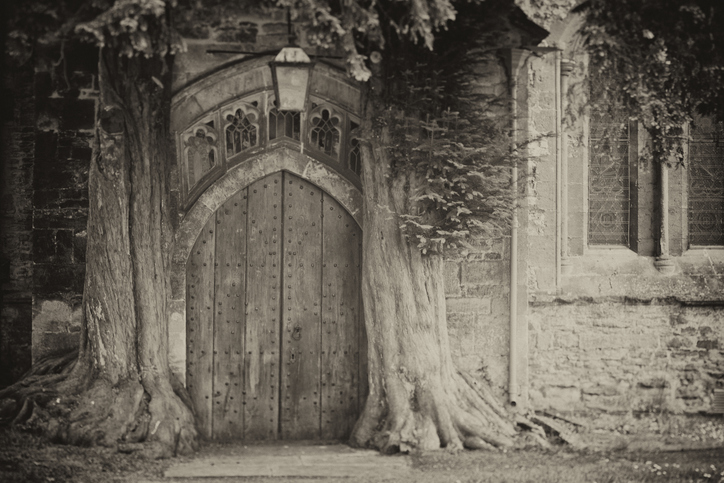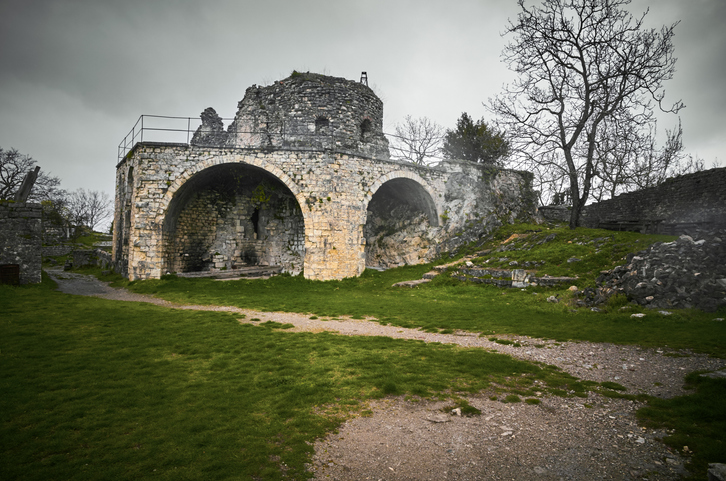Roger Griffin argues that nostalgia for a holistic cosmology is important to the Italian sacred Right’.1 This explains why fascists like literary and historical fantasy. According to Griffin, they are motivated by a mode of aesthetic politics. They have this in common with the Left, with some important differences.

Griffin’s Argument
Roger Griffin came to the field of history by way of literature. Along the way he learned that
“all disciplines develop colonial or neo-colonial attitudes if they do not accept as an implicit premise of their ractivity that there are areas of human reality they are less well-equipped than others to document or explore.”
Griffin p, 102
Unfortunately, the boundaries between literary and historical phenomena are not clear in the case of fascist ideology. This becomes obvious to Griffin in the context of J. R. R. Tolkien.
A group of articles appeared in 1983 to mark the publication of Tolkien’s biography. One of them was written by the president of the Tolkien Society in Italy. It was entitled Why He Became a Cult for Us. The author was Gianfranco de Turris, a prominent propagandist of the neo-fascist Right. De Turris was ‘one of Italy’s major publishers and cognoscenti of literature of the fantastic.’ And he wasn’t the only fascist to appreciate Tokien.
Marco Tarchi wrote in his programmatic, Beyond Right and Left, ‘we had an example of what it means to belong spontaneously to a cohesive group-mind without any leadership in the years in which many of us discovered Tolkien, the fantastic, the saga‘.
Probably the most meaningful indication that the Italian neo-Right had adopted Tolkien as one of its official sources is the name the neo-fascist Movemento Sociale Italiane (MSI) chose for its youth training base in the Abruzzi, ‘Camp Hobbit’.
Tolkien and the Left
The Left has Tolkien and the love of fantasy in common with the Right. Griffin cites William Irwin Thompson’s book, At the Edge of History. This book discusses the new idols of the Aquarian Age. Thompson’s book includes everyone from Blake to Edgar Cayce, the I Ching to Velikovsky, and the Mayas to Arthur C. Clarke.
A hitchhiker introduced him to The Lord of the Rings, presenting it as the real history of this planet. This description led Thompson to formulate a theory. Maybe the history of the world is a myth, and myth is the remains of the real history of earth.

Griffin expands on this idea.
To ignore the cults the metaphysics growing up outside academia, to put one’s faith in them as the dawning of a new phase of industrial society or to indulge in breast-beating about the threat they pose to high culture may throw considerable light on the psychological make-up of the historian but little on history. What the historian is surely called upon to do is identify causal structural factors shaping events, and what is being argued in this article is that the Italian ‘sacred Right’ demonstrates how important the nostalgia for a holistic cosmology can be as a component of the ideological forces at work in contemporary history.
Evola and A Kinder Gentler Fascism?
At the time Griffin’s article was published, (2005) right-wing authors claimed Euro-fascism was no longer just a revival of the fascist creeds of the thirties. Unfortunately, there doesn’t seem to be one fascist program or ideology. That said, Griffin was able to place de Turris, Tarchi, and Rauti within the ‘sacred’, ‘metaphysical’ Right.
Julius Evola influenced all three of them. Evola is important first as inspiration to their youngest recruits; second, as one of the most qualified representatives of Right Wing culture; and third, he has supplied the theoretical basis for neo-fascist violence.
Evola’s Two Forms of Society, the Modern, Unsubstantial Form, and the Superior, Traditional Form
Griffin says the best introduction to the principles at the heart of Evola’s writing is The Revolt Against the Modern World, published in 1933. In this book, Evola identifies two fundamentally opposed forms of society: the ‘modern’ is essentially secular and based on the ‘inferior realm of becoming’. It represents an onslaught on the other form of society. That would be the original type based on the ‘superior invisible realm of being’, the only one with any substantial reality. ‘Traditional is the term for the ‘superior’ type. It is a key term for understanding contemporary neo-fascist thought.
A Traditional society is one in which the individual is an organic part of a hierarchical state governed by a caste of warrior-priests, custodians of supratemporal metaphysical truths, and headed in their turn by a monarch.
Griffin p, 104
Myth and civilizations of the distant past are evidence that Traditional states existed. For them, life was an initiatic experience. Ritual, the rule of law and caste protected them against the degenerative forces of secularism, egalitarianism and individualism.
The Forces of Degeneration
In this view, Western society is in an advanced stage of decline. This process is said to be irreversible. (Remember Oswald Spengler and his saga of decline?) Yet the fascists remain, glowering and threatening.
In the 1934 and 1951 editions of Evola’s book, he wrote that international fascism would bring a cultural rebirth and a new Golden Age of Traditional values. In the postwar edition of his book, he advocated a stoic response to the decay. He believed ‘Bolshevism’ and ‘Americanism’ would eclipse the true ‘immortal principles’ for the foreseeable future. The only suitable political response was a refusal to dedicate one’s self to any political cause. This is the Traditionalist worldview.
Is the Answer a New Approach to History?
Griffin speculates that if there are ‘two cultures’, maybe the division has to do with they way the two sides deal with modernity. Some learn to live with partial knowledge. Others only feel at home in a total explanatory system. This second category needs a vision of the world.’ Or is that naive?
The Ring cycle is based on Christian experience; Tolkien hated apartheid and rejected racist policies in his native South Africa. Maybe this is not a both-sides kind of issue. The differences are crucial here and now.
Conclusion: the Historical Implications of Radical anti-Modernism Have Not Gone Away
Perhaps these differences were overlooked and that’s why the world got German Romanticism, idealism, neo-paganism, and the rise of Nazism. And we can’t forget that the ‘historical implications of radical anti-modernism did not disappear at the end of WWII.
Tolkien portrayed the modern, secular intellect as the evil Saruman. Perhaps his intuition was sound. But some of the ‘hobbits who are planning the revolt against the Sarumans of the modern world are not mythical, but specially trained in the Abruzzi, confident in the knowledge that they are serving another sentinel: Julius Evola, ‘closed in his tower which is certainly not of ivory, romantic and decadent, but the tower of a castle, a fortress, classical and aristocratic.’ 2
- Roger Griffin, Revolts against the Modern World: The Blend of Literary and Historical Fantasy in the Italian New Right, Oxford Polytechnic, ProQuest Information and Learning Company, 2005 ↩︎
- De Turris, Testomonianze, Op. cit. This is how Aniceto del Massa opens his piece entitled ‘The Tower as a Symbol’, pp. 97-101 (as cited by Griffin) ↩︎